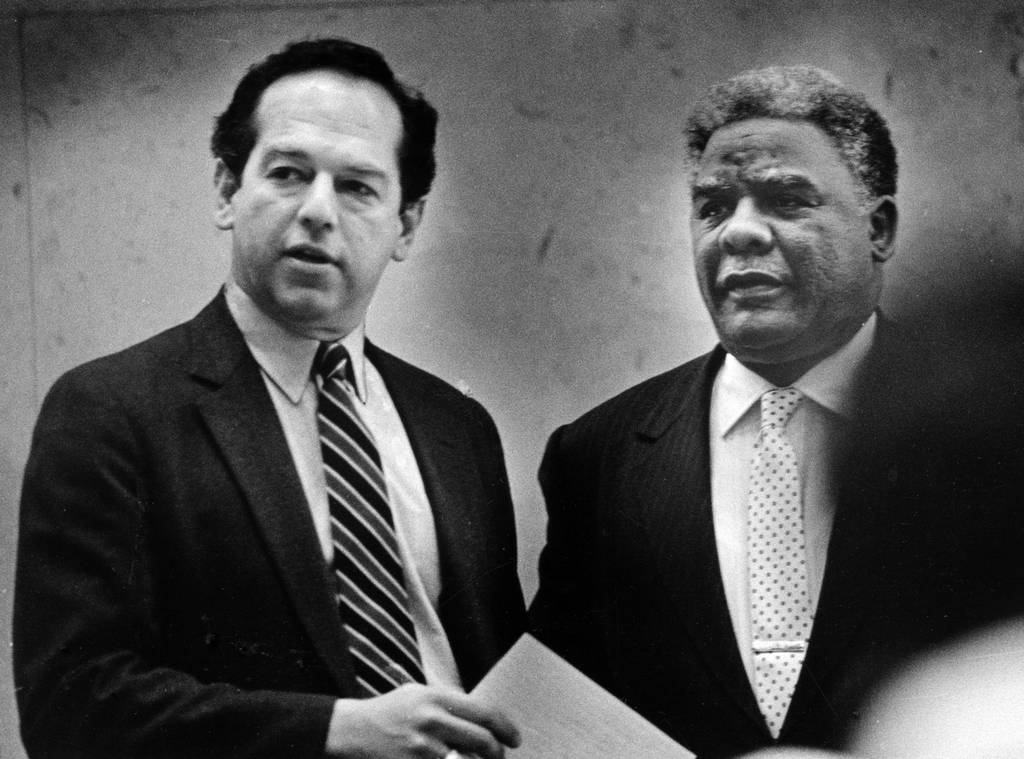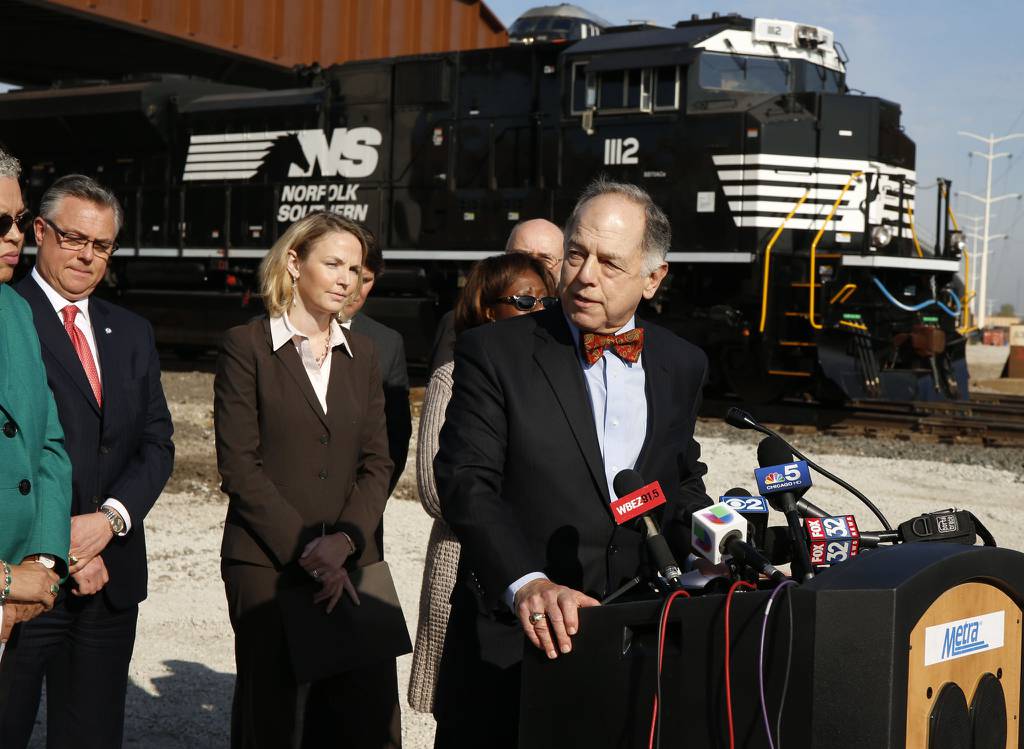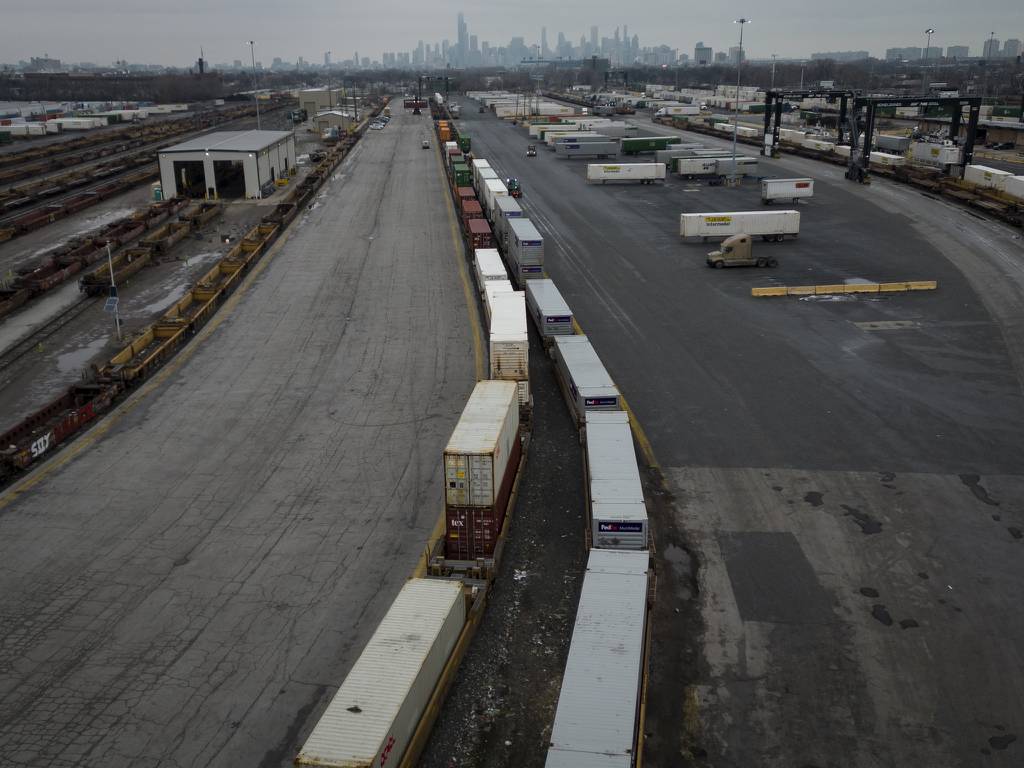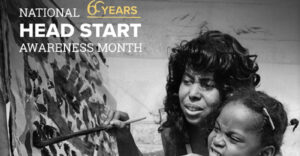Not even the toxic fireball over an Ohio derailment could shake Martin Oberman’s belief that railroads are a safer way to move hazardous chemicals, and most other freight, than long-haul trucks.
“Would you rather have your family and your SUV driving down the highway at 75 miles an hour next to a truck filled with chlorine, and the guy doing the driving who didn’t get enough sleep, or would you rather have that chlorine on a railroad?” asked Oberman, the nation’s most influential train regulator, during an interview with the Chicago Tribune last week.
“The answer is pretty obvious,” said Oberman, chairman of the U.S. Surface Transportation Board.
On March 15, less than six weeks after the East Palestine, Ohio, calamity and amid increasing congressional scrutiny of rail safety, Oberman led the transportation board in approving the first big railroad merger in a quarter century, one that will have steep repercussions for Chicago-area communities. And he cited safety as one of his chief reasons for doing so.
Oberman, a former Chicago alderman and Metra chairman, insisted during the interview that he and other board members had worked hard to balance the concerns of suburban communities with what he described as the country’s overwhelming economic and environmental imperative to move more freight on railroads.
Less than 1% of hazardous chemical spills occurred on railroads in 2022, compared to 94% for trucks, Oberman said.
Metropolitan Chicago, where elected officials mobilized to block the $31 billion merger between Canadian Pacific and Kansas City Southern, can expect one additional hazmat spill from the combination every 125 years, the transportation board previously said in a news release.
The merger could shift 64,000 truckloads of freight a year from trucks to trains, the release said, lowering greenhouse gas emissions and bringing new economic vitality to Canadian Pacific — the railroad with the industry’s best safety record.
Even so, Oberman promised seven years of extra STB monitoring after concerns were raised by first responders, commuter railroads and local businesses about the more frequent trains the merger will bring. The board can extend this monitoring if needed, he said.
The Illinois Trucking Association didn’t respond to calls and messages seeking comment.
Chicago has been the country’s premier rail hub for nearly two centuries. Residents across the sprawling region have been living cheek by jowl with train tracks for generations, and many — rich and poor, Black and white, city and suburb — have had enough.
Just two days before the Norfolk Southern derailment in East Palestine, the Chicago City Council gave its final approval to the railroad’s expansion of its intermodal yard at 47th Street on the South Side — after 15 years of protests.
Even after Oberman’s assurances about the Canadian Pacific merger, Carie Anne Ergo, the village administrator in suburban Itasca, denounced his reliance on Canadian Pacific traffic forecasts as “the fox guarding the henhouse.’’
Rep. Raja Krishnamoorthi of Schaumburg described Oberman’s decision as “disastrous’’ and a “rubber stamp.’’
U.S. Sen. Tammy Duckworth said during a congressional hearing Wednesday, “The bottom line is that what happened in East Palestine could just as easily have happened in Illinois.”
Five derailments caused hazmat spills in Illinois during 2022, according to a report the state’s Commerce Commission released Friday. The largest release took place in Albers in September, when a derailed Norfolk Southern tank car spilled 20,000 gallons of methyl methacrylate, a chemical used to manufacture acrylic plastics.
Rail cars that did not derail spilled hazardous chemicals 52 times. These included a Canadian Pacific locomotive on which a ruptured tank spilled 2,000 gallons of diesel fuel in Franklin Park in July.
To address the concerns of suburban communities, the merger contains new requirements, including one that prohibits railroads from blocking crossings for longer than 10 minutes when practical. In other Chicago-area communities such as Bridgeview, where blocked crossings are an everyday, stomach-churning occurrence, no such agreement exists between the railroads and city, state or federal authorities.
The new railroad must work with communities affected by the merger on funding for quiet zones and setting up a system to notify first responders if there is a blocked crossing or other issue.
And if, in future years, data shows more restrictive measures are warranted, the federal oversight agency can impose more, Oberman said.
Immediately after the merger was announced, leaders in the affected suburbs said they felt they were receiving little help as part of the approval. But Oberman said he and the board had listened to their concerns.
“We’re not leaving the folks alone in the northwest suburbs,” he said. “We are there.”
At age 77, Oberman is no stranger to controversy.
Former President Donald Trump nominated him to the STB in 2019 and President Joe Biden tapped him as chairman two years later.
As a Chicago alderman from 1975 to 1987, he led the so-called Lakefront Liberal voting bloc.
[ Oberman won’t seek re-election ]
When Oberman helped Harold Washington celebrate his reelection as Chicago mayor during a raucous news conference in 1987, Washington grabbed Oberman’s arm and held it aloft in triumph.
Oberman describes Washington as a spectacular leader who could have accomplished great things if he hadn’t died suddenly in 1987.
But Oberman also pushed back whenever he felt Washington was veering too close to the cronyism and backroom deals that remain hallmarks of Chicago politics. “The problem with Harold,” Oberman later told an interviewer, “is that he gave us too much to apologize for.”


Three decades later, Oberman finds himself in a similar position in relation to the railroads.
Oberman views trains as essential tools for protecting the nation’s economy and its environment. But he never stops lambasting their management for cutting too many jobs, providing lousy service, and failing to invest enough so railroads can grow, even as they send vast amounts of money to Wall Street.
In the 22 months ending in December 2021, the big U.S. railroads cut 13,271 jobs, Oberman said in a speech in November. They saved $4.8 billion in doing so. But during this period, at the height of the COVID-19 pandemic, they spent nearly $60 billion on share buybacks and dividends. In the meantime, he said, service was “falling off a cliff.”
During six years ending last fall, the total number of long-haul truckload freight shipments grew by 27%, or nearly twice as fast as inflation-adjusted GDP, according to Larry Gross, an independent analyst in Durango, Colorado.
Intermodal shipments using railroads, meanwhile, grew by just 1.6%, Gross said.
That leaves Chicago to contend with more trains where many people don’t want them, and more trucks rolling into what, according to Inrix, is already the nation’s worst traffic congestion. Inrix is a Seattle firm that specializes in analyzing traffic data.
The workforce reductions also damaged the railroads’ safety record, Oberman said.
“There have been tremendous cuts in the number of car men — and I believe that is still their title even though there are plenty of women who do it — whose job is to inspect trains car by car before they leave,” he said. “That definitely puts stress on making sure that all the preventive work takes place.”
Oberman declined to comment on the Railway Safety Act, which Congress began considering in the aftermath of the East Palestine derailment. He couldn’t comment, he said, because different federal agencies, and not the STB, have statutory responsibility for preventing accidents.
But he still wonders, he said, why railroads are left to make their own decisions — without federal oversight — on whether and how to deploy some promising safety technologies. These include so-called hot box detectors, he said, that use infrared cameras to spot defective wheel bearings on passing trains.
So how does Oberman propose to win a game of three-dimensional chess in which he corrals railroad management, promotes the expanded use of trains and mollifies freight-weary residents in crossroads like Chicago?
The STB’s job is to listen to all affected residents and businesses, and to do its best to address their concerns but not necessarily to make everybody happy, Oberman said.
“The freight rail network is a mainstay of the Chicago regional economy,” he said. “So if you really had to answer the concerns of people who live near a railroad and who say ‘we don’t like having this rail stuff by our house,’ there’s really no answer but to shut down the economy.”
Oberman won’t be fighting these battles in a vacuum. Chicago, in fact, is on the cusp of a historic upsurge in rail freight traffic.
Union Pacific is doubling the size of its main Chicago-area terminal in Joliet, while Norfolk Southern — after finally winning City Council approval — is doing the same with what is already its biggest yard at 47th Street. Canadian National is expanding in Harvey, Canadian Pacific in Bensenville and CSX at 59th Street in Chicago.

Perhaps the most new traffic will come from BNSF. The railroad just announced a $1.5 billion investment in what could eventually become the world’s largest intermodal freight yard in Barstow, California.
The Barstow yard will feed trains onto the railroad’s Southern Transcon tracks that end in Chicago. Eventually, the added traffic reaching Chicago could match that of BNSF’s existing Corwith yard, which attracts more than a million trucks a year to the city’s Brighton Park neighborhood.
Chicagoans aren’t preparing for such growth because most don’t know about it. As the city’s mayoral candidates focus on hot-button issues such as crime and public education, important issues such as traffic congestion get shunted aside, said Joseph Schofer, a Northwestern University transportation expert.
“People don’t feel the effects of air pollution right away,” Schofer said. “But when they hear gunshots, that’s an immediate problem and policymakers have to deal with it.”
In 2003, the city convened a public-private partnership called CREATE (Chicago Region Environmental and Transportation Efficiency Program), to address rail congestion.
But in two decades, CREATE has raised just $1.8 billion of the $5 billion it needs to complete 70 targeted infrastructure projects. Railroads contributed just a quarter of the amount raised, and Oberman said that’s not enough.
As a private citizen and not in his official STB capacity, Oberman endorsed Mayor Lori Lightfoot in the city’s initial round of voting. He declined to say who he’ll support on April 4 and said he hasn’t decided whether he’ll make a public endorsement.
Whatever the outcome of the April 4 election, Oberman said the new mayor should push hard for more federal and state money for CREATE and other rail infrastructure projects, as well as additional cash from the railroads.
“The financial industry here is supported by railroads, the manufacturing, the big retailers and the distribution centers,” he said. “So a mayor should at a minimum want to facilitate the best functioning of the current rail system.”







